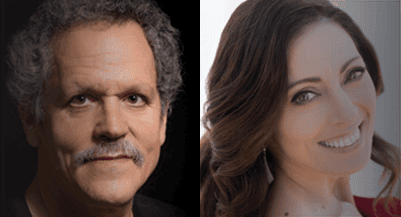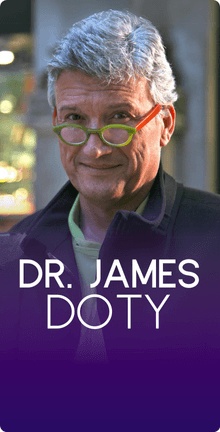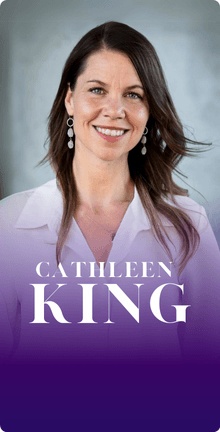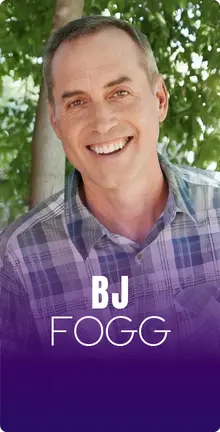In this Episode
- [00:39]Stephan introduces Dr. Jeffrey Schwartz and Josie Thomson, co-authors of the book The Wise Advocate.
- [01:55]Dr. Jeffrey shares the four-step process to bear in mind during times of crisis.
- [13:01]Josie explains how to apply the four-step process for certain situations.
- [23:10]An introduction to their book, The Wise Advocate and why their readers find it very helpful in dealing with personal and operational crisis.
- [24:28]The distinction between assessment and discernment.
- [31:41]Dr. Jeffrey demonstrates a mindful exercise that focuses on the practice of attention control.
- [38:40]Josie shares how meditation helped her during her health battles.
- [43:39]Dr. Jeffrey explains how self-directed neuroplasticity works.
- [48:14]Dr. Jeffrey and Josie conclude the interview with practical tip on how to implement the Wise Advocate in your life.
- [50:29]Learn more from Dr. Jeffrey and Josie with their book The Wise Advocate and on their website wiseadvoc8.com.
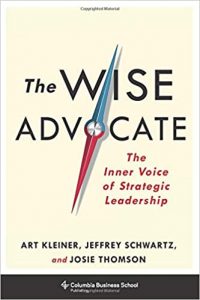
Jeff and Josie, it’s so great to have you on the show.
JT: Pleasure to be here.
JS: Good to be here, Stephan.
Let’s start by talking about the elephant in the room, what’s going on with regards to the outbreak? There’s a lot of fear, hysteria, hoarding of everything from toilet paper to everything else including guns. What would be the most important thing for our listeners to bear in mind during this time of crisis?
JS: We acknowledge upfront that we’re in a situation where we don’t really know what’s really going on. That itself is obviously an acknowledgment that makes people anxious, but at least, we have to understand what we’re doing and modulate it in that context because we’re also gaining information rapidly.
One of the things that you want to consult your wise advocate about is your inner loving guide. We use it as a sort of a synonym type term for mindfulness with the added ingredient, mindfulness being basically observation, clear-minded observation of your conscious experience. In the tradition that mindfulness comes out of, that is always done for the purpose of clear mindedly assessing and making discernments about your content and responses to the feelings and thoughts that you’re having, specifically within a traditional perspective out of which mindfulness comes about the wholesome or unwholesome nature of the content and your responses.
I would say in a more current usage that’s come into a sort of fashion and very wide usefulness in this generation, in the last 10 years, very intensively in the last 5 years. They put very strong stress on calmness, and then in the present moment, and then this word non-judgmental which I’m kind of relieved to say isn’t quite as fashionable as it was a couple of years ago, but it’s still quite fashionable.
When you’re in a situation that’s fear-provoking, because of being in an unknown situation with the disease involved, it’s clearly going to be anxiety-provoking and fear-provoking. But on the other hand, we’re learning rapidly, we’re getting more information. From the perspective of the four steps which we’ll say more about in this interview which are relabel, reframe, refocused, revalue. The wise advocate is always working with you, your inner loving guide in the service of doing that action of putting a clear-minded label on the contents, reframing it so that it’s true. We really want to recognize cognitive distortions.
The second step of reframe is very related to what’s called cognitive therapy. There’s a mindfulness-based cognitive therapy which is in wide use in psychotherapy practice. Then, you refocus your attention based on an insightful understanding of what’s happening.
These are all mental actions in the service of being clear-minded. Now, we’re in a situation where obviously everything on the internet, on television, a lot of experts, a lot of information. You want to be able to take that in a clear-minded way, adjust how you focus your attention, and then the value that you put on your responses, making assessments, and the steps discernment.
The wise advocate is always working with you. It’s your inner loving guide in the service of creating clear-minded decisions even in difficult and stressful times. Share on XIt’s favorable to our understanding of the wise advocate perspective on the practice of mindfulness because it shows how this term, non-judgmental, can become problematic. When you’re really having to make real decisions about how to apply your mindfulness, how to apply your wise advocate perspective in the real world, in day to day living and so. That’s why we like to use the concept that the wise advocate helps you use mindfulness to bridge between non-judgmental and judgmental in the very specific sense of making assessments and discernment about what you’re thinking, how you’re feeling, and what to do about it.
The big point is—the non-judgmental part which we’re going to bridge to the assessments and discernment—we certainly don’t want to be in a sense of denial. We don’t want to make believe nothing is happening, understated, or even kid ourselves about how anxious and fear-provoking it is.
In that way, the big point about non-judgmental from the way we practice, which is very much aligned with the traditional origins of what mindfulness is, is that you’re definitely aware—you’re not filtering, you’re not denying, you are receptive, you are accepting to use a word that really does have a lot of good application.
A long time colleague of mine, David Creswell at Carnegie Mellon University has done a lot of work in recent years on what he calls monitoring and acceptance, approach to mindfulness. You’re monitoring with an acceptance of what is coming in. You want to perceive reality. I mean, you do want to experience what’s really there. But then, you also want to be very aware of how you’re responding to that because in responding to that comes a lot of the negative emotion, negative self-statements, fear, denigration, etc. That’s where making clear-minded assessments and discernments are important.
That opens you up to taking in information, social distancing. It takes a lot of mindfulness to overcome the habits of polite, civil way, maintaining a six-feet distance between you and other people, obviously not just shaking their hands. We’re in a period now where our automatic habitual responses are maladaptive. That really brings up a useful application definitely of mindfulness, but again, within this perspective of the wise advocate of having that inner loving guide, helping you make assessments and discernments so that you have awareness accepting the situation that is really there but then also being aware of what your responses are. Therefore, using relabeling like, “Okay. We have to respond knowing that social distancing is what is called for now.”
There is a person I was about to just put my hand on their back or shake. Nope, that’s not for right now. You do an elbow bump, you do what now is the appropriate behavior, and in this way, you’re reframing the situation adaptively and refocusing your attention appropriately. That’s going to lead to you revaluing your situation. I’ll just finish this opening contextualization.
Step four, the revaluing. It is really an indication of a term I coined years ago, self-directed neuroplasticity, that your brain is actually changing in response to you using mindfulness and using the wise advocate. There’s now a very significant body of research about how using mindfulness can in fact change your own brain. I coined this term years ago of self-directed neuroplasticity attention can change the brain, how you choose to focus your attention actually changes how your brain works and.
Pretty quickly when you do it in this context, you can pick up these new habits and you can change how you value the situation. Therefore, making new habits of responding appropriately. That’s an overview of how to fit a wise aggregate perspective into our current circumstance.
That’s great. Josie, what would you add to what Jeff just said in terms of using those four steps to address your anxiety, fear, or uncertainty. Actually, I’ll give you guys a specific example that just happened. This is very fresh, it’s like two hours old. Somebody was casing our house, somebody very suspicious-looking. He was going from house to house. He actually looked at our windows. He made a call on his phone and he was writing down our address or looked like he was writing something down. He was marking our house, very terrifying.
I didn’t see it. My wife, Orion, did. She went outside and he had already left. He was gone. She couldn’t see him really but she saw him from the window and he didn’t know that she saw him from the window. She was recording her own podcast interview and she noticed him checking out our place.
Pretty terrifying. She’s still shaken up about that. I’m shaken up about that. We’re wondering all what we have like, how we’re going to protect ourselves? We get a home security system but that’s not protection, that’s just a big noisemaker that will happen when they break-in. That’s a pretty terrifying and unsettling situation that we’re having to deal with now. If we use the four steps—the relabel, reframe, refocus, and revalue—how do we apply that to my situation?
JT: Jeff, do you want me to answer?
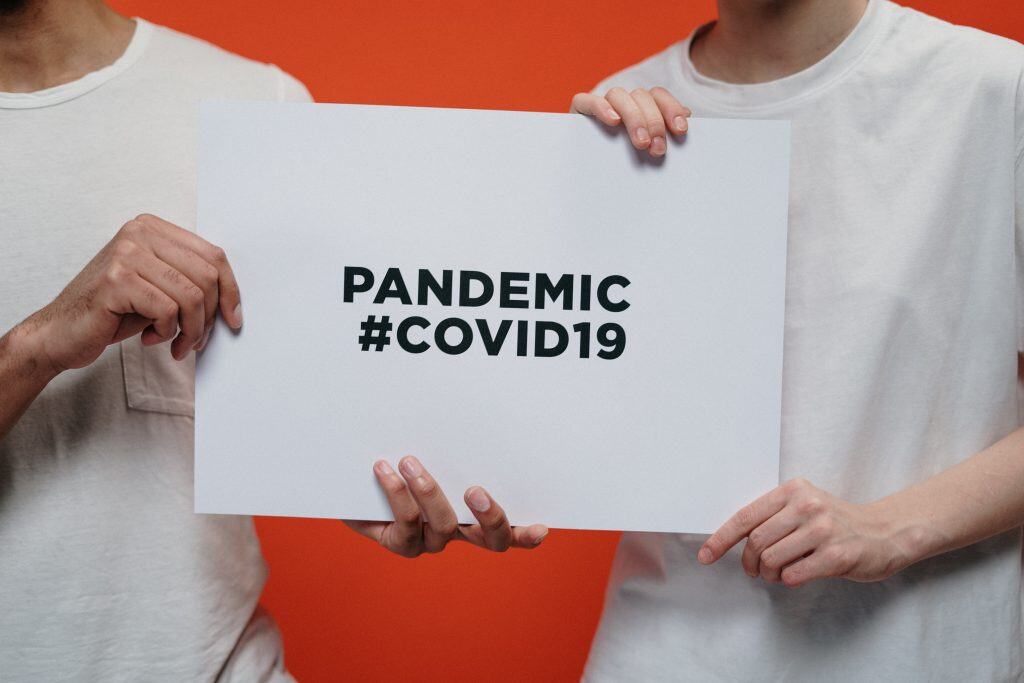
JS: Yeah. You can answer. I’m sure we can come up with about the same. You just actually relabelled it there, Stephan, pretty good. Now, we start framing. Obviously, this is certainly not an example of where you’re going, not to disrupt the brain message. This is really one of those complex situations where you have to really use assessment and discernment.
It is a good example of saying, “I’m sure you wouldn’t want some pop mindfulness teacher to tell you to be non-judgmental about what you think you have.” Now, you’re in the tough job of needing a wise advocate perspective to make appropriate assessments and discernments.
JT: The way to do that is to notice that, initially, your brain will be focusing on the threat of the situation which is what the brain is designed to do, right? We’re designed to be looking out for threats in our environment with the overarching intention of keeping us safe. Clearly, that was a situation that created the threat response, and naturally, it elicits emotions that really seize your capacity to think straight.
This is where applied mindfulness is really key to settle down those compulsions and those potential reactions that you might then enact if you’re not being mindful. The first thing you need to do is literally—my kids tell me to do from time to time is calm my farm—really settle down your mind, your body, your breathing, your nervous system so that you can regain that clarity of mind. So you can discern wise, adaptive strategies to deal with the situation.
Right. You’ll end up reacting versus responding if you’re coming from this very fearful fight or flight sort of place.
JS: Exactly. When that’s triggered, your cognitive capacity to think adaptively and resourcefully is impaired. What you’ll notice is that you’re thinking, “I don’t want to be robbed, I don’t want to be threatened, I don’t want this person to come back.” You’re focusing on all the things that you don’t want.
What we need to do is refocus attention forward towards what you do want. What you do want, all of a sudden, elicits that prefrontal cortex and your capacity to now employ different thinking that has you much more solutions focused and able to just think about adaptively, what do I need to do? What is one thing I cannot do right now to feel most safe, to secure my home, or to ensure the well-being of my family? What would you like to add to that, Jeff?
JS: Obviously, you’re saying your wife was in the middle of doing a podcast. You can see how if you really, especially in this day and age, just take out your phone, you can immediately take a picture. You readily could have taken a picture of this person.
She wished that she had the foresight to do that, but she was in shock. She didn’t get a picture.
JS: That’s a perfect example of what we’re saying. I’m certainly, in no way, criticizing for being in shock because that is the absolute natural response. That nervous system freezing, as Joseph Ledoux, a colleague, has written so much about over the years from NYU—that’s a primary amygdala response, a physiologic response to threat is that freezing.
Uncertainty provokes fear and anxiety. But with the right tools and information produce good decisions. Share on XActually, that’s a great point because most people think of it only as fight or flight, but that’s actually three things: fight, flight, or freeze.
JS: And freeze, absolutely. It comes even before the flight, generally.
JT: I think there’s more to that.
JS: Of course. But then, the fear is kind of a conscious response to those feelings and then you manage that. You can see how clear-mindedness could rapidly enter the picture, etc. Just calling the police is probably going to lead you to the response we can’t do anything unless we have other information or unless something has happened. You have to prepare yourself for that but still might want to report the possibility to the police. But then, not be surprised or disappointed when you get that response.
I guess all the time for it to happen, people are supposed to be spending so much more time at home right now so it’s one of the benefits of the current situation. It seems like it’s not exactly prime time for people trying to sort of break-in when no one’s there because mostly, they are going to be people there more than ever now, right at this particular moment. That’s kind of interesting. Of course, don’t forget to say it, it could be innocent. The guy could have been lost.
No, he was checking out other houses in the neighborhood, and making more calls, and making more notes.
JS: Obviously, it’s not necessarily nefarious.
It looks pretty nefarious and the guy did not look like a good guy.
JS: Okay. Now, you’re putting that part in. There you have it. Obviously, you might want to call some of those neighbors and see if they saw it too or alert them to the fact that this has been noticed.
Yeah. I was formulating a list of things to do, to post something to nextdoor.com. Let all the neighbors know that, “Hey, somebody was casing the neighborhood. Keep a lookout.” I posted a message to this WhatsApp group that I’m on, a bunch of guys that are part of a secret society that I’m in, and I asked them what I should do. I did get my wits about me and started thinking through. That’s my wise advocate.
But I did have to pause and bring down my amygdala, calm down my amygdala, and bring in the sanity and the space to think rationally. My wife’s first immediate reaction was, “Oh my God, we need a gun. We need to get a gun, where do we get a gun?” Definitely, you want to bring in that response and not reactivity.
JS: That’s everything we’re talking about. I’m not saying it’s merely a shorthand phrase but it is in fact a shorthand phrase to say you consulted your wise advocate. It has a deep meaning underneath it and a whole set of actions associated with it. It brings in the interface between relabeling, reframing as you’re describing, refocusing, taking which tends to mean do something, do another behavior, focus your attention adaptively which you were doing.
Now, you’re in the process of valuing it, we’re talking it over. All of this breadth and depth of acceptance, monitoring, receiving the information in an initially non-judgmental way so you get all the information. Do it in a communal way so that you can pretty quickly overcome the natural nervous system freezing and fear responses that will occur. But have them last shorter than they otherwise would without you consulting the wise advocate, and then starting to take appropriate action.
All of that are just parts, and obviously, this could be built out, and built out, and built out further and further. We do have a whole topography where we’re talking about the high ground, and the low ground has a place to play. We do that specifically in our business leadership applications of these ideas.

But various parts of the nervous system come into play and then we try to integrate those aspects of the nervous system. This is what our book, The Wise Advocate, goes into significant detail about delineating and training yourself to use and apply. Consulting your wise advocate has a deep and rich associated set of understandings and actions that are summed up in those little words of consult your wise advocate.
Your four-step process reminds me a bit of CBT, kind of behavioral therapy, where A+B=C in normal circumstances. A is the activating event, B is your belief, and C is the consequence or consequences. But then if you re-evaluate, reprocess it and you say well actually, A+B+D, for dispute, the beliefs. There’s still that activating event, somebody is casing our house but what’s my belief about that? Reevaluate those beliefs, dispute those beliefs, and then E is your new experience, you re-experience it differently. That’s what I’ve learned about CBT. Is this pretty similar?
JS: Oh, yeah. Look, on the book where you originally gave this kind of application to the method which is my last book, which I wrote with psychiatrist Rebecca Gladding, who was a resident at UCLA at the time, and I’ve known her for many years. In fact, I even wrote her medical school recommendation letter to go to UC San Francisco years back. In that book, which is where the wise advocate concept was originally introduced…
What was the name of that book?
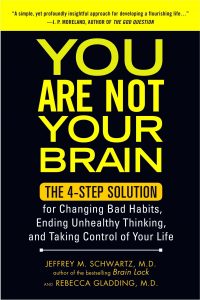
I love that title, by the way.
JS: David Barnes gave us one of our main endorsements. Of course, he is feeling good and is one of the main people who worked with Aaron Beck in popularizing and using what is the standard book for cognitive behavior, cognitive therapy for depression. What the wise advocate is really trying to sort of develop our approach to mindfulness-based cognitive therapy, a term that was actually coined by another close friend and colleague of mine, John Teasdale, at Cambridge in England. Absolutely. The wise advocate is deeply and historically linked to all of those things, purposefully.
Awesome. Anything that you want to add, Josie?
JT: I think what’s happening is when we get triggered so intensely like that, we have an automatic perception of it based on our previous life experience, hard wiring, and beliefs. It’s really important to realize that we’re not tuning in to the whole picture and all of the options available to us, that our focus on attention gets hijacked by the threat, and therefore, limits our capacity to broaden the lens on all of the information and the adaptive strategies we do have available to us.
It’s like tunnel vision.
JS: Absolutely. That’s right. Wise advocate is very much a way to not get trapped in tunnel vision and to get yourself out of tunnel vision as quickly as possible.
Good stuff. The Wise Advocate book is really about using that wise advocate and the four-step process in leadership as a business leader, or as a leader of a nonprofit, or governmental leadership, etc. But this is applicable to everybody, right?
JS: Actually, a wise advocate, as I’ve just mentioned, is an outgrowth of the book, You Are Not Your Brain, which is very much more of a psychotherapy, self-help book for people with moderate routine anxiety type problems. Goes way back years and years ago to my work with obsessive-compulsive disorder, which is a very different thing and a very significant psychiatric illness.
As 20 years went by, we started to apply it to higher and higher functioning people. With the book, The Wise Advocate, we’ve kind of very much gotten from help yourself, kind of get to normal. We already very much recognize your normal and more than just normal, and now we’re going for full-blown excellence in applying the method for how you get to excellence from good.
High performance.
JS: High performance, exactly.
I’m curious, you mentioned assessments and discernments multiple times. Is there a distinction between those two or are they pretty much the same?
JS: Oh no, they’re not quite the same but they’re definitely related. They’re definitely related but they’re not the same. This process to sort of understand what I was trying to do there was to take the traditional, scriptural literature of the mindfulness tradition, and translate it into more user-friendly terminology. I just had to openly acknowledge that in this day and age, wholesome and unwholesome weren’t going to really get us there.
Develop that sense of openness to whatever is coming. Be non-judgmental in certain situations, and only have a goal of assessing them neutrally. Share on XEven other translations of the scriptural language terms which are crystal and not crystal are sometimes called skillful and unskillful. Even that wasn’t quite there. I figured, if you really think about this whole issue of monitoring and really paying close attention, first you want to make this sort of assessment of what is coming in. Then, you want to have discernments about how you are responding to it.
I’m not saying that’s all discernment always is simply or exclusively an introspective discernment of how I’m responding to it. What The Wise Advocate is particularly going to be good at, is helping you realize when your assessment and your discernment are not well aligned so that you can see what something is, and make a proper assessment of it, and still not be using proper discernment in the way you’re responding to it.
It’s this integration of being open to what’s coming in. That’s where the nonjudgmental word is quite good, and then starting to make an assessment about it. That goes right to the heart of the tradition, is my response to this skillful or unskillful? And what exactly is it that I’m responding to? Am I just responding to what my amygdala is doing? Or am I really bringing in higher cortical processes to sort of override what the amygdala is bringing up in terms of freezing, running away?
The discernment I like to think of as really quite a high level like subtlety, really seeing the subtleties in what’s going on and the subtleties. Almost like in wine tasting where they talk about the discernments, the bouquet, and the aroma. I don’t want to talk like I know a lot about wine because I don’t. But I’m just trying to show that being a connoisseur of your response is what I’m trying to get out.
You’re thinking about your thinking.
JS: Well, that’s metacognition. We haven’t even brought that one up yet but that’s kind of the entry point into what we call the higher ground. Josie used the term a little bit earlier, applied mindfulness. Applied mindfulness is almost a synonym for metacognition and kind of thinking about what you’re thinking.
That leads into paying attention to what you’re paying attention to which is much more considerably more challenging and that’s already into like real mindfulness, real wise advocate connection when you’re really paying attention to what you’re paying attention to. That’s where you’re really making these sophisticated, subtle discernments about how is my response to this grabbing my attention, what kind of attention am I applying, why is advocate attention or more brain stem, limbic type attention.
JT: That’s a great example, what you gave, Stephan, about the immediate thinking was based on thought and then trying to create a sense of safety. Therefore, if you’re not paying attention to what you’re focusing your attention on or what you’re thinking about, your decision making would then be aligned with that desire for safety rather than what’s the ultimate outcome that I want rather than the threat, what is it that I need to focus on.
Right. I’ve heard many times the phrase mindfulness meditation. I’ve never heard applied mindfulness as a phrase before.
JS: Well, thank you. We’ll take that as a compliment on our originality, Stephan. That’s exactly why we came up with the term to try to avoid using the term meditation, which in business leadership circles is close to being maladaptive. That’s an overstatement because now it’s become accepted enough that it’s not maladaptive. It’s kind of a turnoff to business leaders.

It’s too woo-woo for some hard-driving CEOs.
JS: Application. All real-world leaders can relate to the term it needs to have an application. We thought applied mindfulness would be a good entry on that.
That’s great. It made me think of Applied Physics.
JS: Yeah, all that. Exactly.
Very cool. Is there a breathing exercise?
JS: There is.
Okay. How does that work? Can you walk us through that? Let’s apply it.
JS: Okay. I have been doing daily practice in a very traditional context for over 40 years, going on 45 years. I’ve been doing this for a long time and I have a very long-standing, very consistent practice. I am a 15,000-hour mindfulness practitioner.
That’s impressive.
JS: I am also quite well-versed in the scriptural foundations of it, etc.
I have to ask you, this came to my mind. Do you know Allen Weiss over at USC and the founder of marketingprofs.com?
JS: I’ve heard about him.
He’s big into mindfulness. He has a center for mindfulness at USC. He’s the founding teacher and director there. He’s a good guy. You’d like him a lot so you could go look him up.
JS: I gave a lot of thought to what’s the way to make this absolutely as user friendly as possible. Josie and I, over the last five, six, seven years, I’ve done a series of webinars. Josie will tell you sort of how you can sign up for those at her website josiethomsom.com. No P in Thomson, josiethomsom.com. I guess I’m okay in the context of everything we’ve been talking about which is fear, managing fear. Might as well just do a quick intro to it especially cause you brought it up. I would not have brought it up if you didn’t.
A lot of thought went into how to make this as user friendly as possible, and still, have it be real. This is what I came up with that we’ve been using for quite a few years now, and I even have a video on YouTube about it, and I’ll probably update it once in the not too distant future.
It goes like this. The cardinal thing to pay attention to when doing mindfulness practice, applied mindfulness. You want to have an object that you’re trying to pay attention to. The very traditional object…
Applied mindfulness is synonymous to metacognition. In layman’s terms, it’s the act of thinking about what you're thinking about. Share on XThe breath.
JS: It is the breath, but it’s more specific than that. It is the breath, that is correct. Now, I’m going to tell you a specific way to pay attention to your breath. These words are taken completely literally, the feeling of the movement of the air. Turns out there are very deep reasons to be talking about that and there’s no time or even probably this is not the place even to get into that depth. But it turns out that those few simple words have a lot of depth.
We generally say, which is the oldest way of doing it, is at the entrance of the nostril or around the entrance of the nostril. What you’re trying to pay attention to is a feeling of a movement caused by air as it enters and leaves your nostril when you are breathing.
That’s really cool. I’ve already started paying attention to that since you first mentioned it and already feel different. I feel more aware.
JS: You have an inbred aptitude for this. What I did was just develop a simple count. Why? Just to get something like the timing that would absolutely happen naturally if you kind of practiced it long enough to kind of get up to 10 to 15 minutes of practice, certainly by 15 minutes or half an hour practice. It can take months or never for people to get up to 15 minutes to half an hour. I didn’t want to leave people with that.
I actually built in a little bit of a count to get you into the right kind of way of accentuating, the feeling, and getting the timing, very user friendly for paying attention. It goes like this. It’s basically a two-breath set that goes like this. On the in, it’s one, two, three, one. Then on the out, it’s one, two, three, two. And then on the in, it’s one, two, three, three, and then on the out, it’s one, two, three, four. At approximately that pace, maybe a little faster than that.
Let’s just do it now, Stephan, because you were kind of paying attention to the feeling of the movement of the air. Now we’ll just add this count as you do it. In, two, three, one. Out, two, three, two. In, two, three, three. Out, two, three, four. That’s two breaths, and then you would just start over.
Here’s the important thing for everybody to pay attention and be aware of—whether beginner, intermediate, or advanced. This is a simple statement that is good for a beginner, intermediate, and advanced. When the mind wanders, and it will wander—clearly, if you’re advanced it’s going to wander less often than if you’re a beginner—but for everybody, it will wander. The quality of attention, your discernment of how much attention you’re paying to the feeling of the movement of the air, you’ll become aware that you’re paying less attention at some moments than others. In advance, that’s kind of intermediate. Those are the kinds of things you become very suddenly aware of, what’s the quality of attention that’s being paid.
The big point of this, it’s not an exercise in just paying attention to your breath. There’s a purpose to that and that purpose is reflected in the awareness that the real goal is that when the mind wanders, you become aware that it’s wandered and gently bring it back to pay attention to the next in-breath or out-breath, to the feeling of the movement of the air. The real practice is the practice of attentional control.
Right. Or paying attention to what you’re paying attention to.
JS: Paying attention to what you’re paying attention to, exactly, there you go. You’re a natural, Stephan.
Thank you.
JS: That’s it. In this exercise and that’s what we’re saying. You’re using your wise advocate. Your wise advocate is helping you and encouraging you; a helper, a comforter, an advocate, a counselor, an encourager, a strengthener, a guide, a friend. That’s kind of just gently saying, “Oh, your mind has wandered.” Just come back to the breath. Don’t get into a whole long thing. I can’t do this, I’m no good at this. Try to let go of that and just kind of go back to the next breath and not get ensnared in whatever the mind was wandering on to.
Sounds like your wise advocate is the opposite of your inner critic, right?
JS: Well, inner harsh critic, inner punitive critic, inner cognitive distortion critic, which we call deceptive brain messages. We call that critic generating deceptive brain messages.
Got it. So, Josie, do you have an example of a situation where you were able to use this process of this breathing and paying attention to what you’re paying attention to, feeling the breath coming into your nostrils and all that to great effect and maybe save the day in some fashion?
JT: At the moment, it’s almost at the beginning of every single executive coaching session I’m walking into. People are coming in with hot states of arousal and stress needing to make stressful, difficult decisions and carrying the burden of the consequence of those decisions on their shoulders heavily.
The first thing I need to do before I could even have a coaching conversation with them is to help them calm themselves down and detach from those threatening thoughts. Actually, just get into a moment of inner peace and calm so that they’ve got the clarity of mind to have the conversation that we need to have.
Now, for you personally though, did you have this tool at your disposal when you were fighting cancer? You’re a two-time cancer survivor as you have in your bio. Was this something that you already had in your toolkit?
JT: Well, the first time I was diagnosed with cancer was in 1991, I was 24 years old and mindfulness meditation were foreign words to me at that time. It was not something that I was familiar with, nor was I really fully cognizant of the meaning of cancer. My mission then was to really understand the circumstance I found myself in and then to heal and get well.
But in 2010 when I had my second cancer diagnosis, I was in the middle of my own neuroscience studies where I was focusing and studying a lot about the brains and all of a sudden it was my brain on the scanner with a tumor. When I had the surgery, after the surgery, I couldn’t walk or talk properly and it was extremely frustrating. I felt like I was trapped in this body that wasn’t responding the way I wanted intentionally for it to do.
I remember one day, and at this time I met Jeff, I’ve learned a lot about mindfulness and I remember sitting out on the grass at the back of my house. I closed my eyes and I stopped fighting, I stopped resisting the circumstance and I just let go. I started focusing on my breath and I did it without even thinking about it. And then all of a sudden, I still remember the moment I opened my eyes and I started looking at the trees, the leaves, and the blades of grass in a whole new way.
It was like I was high on something. I’ve never taken drugs, I would know, but it felt like I was just intoxicated by what I was seeing almost for the first time. These things were always there but I’ve never actually paid attention to them. From that moment, I decided that I would engage in meditation practice every day. I haven’t sustained it as long as Jeff, mine’s only been going since 2010, but I meditate every single day. I try to make my way of life very mindful no matter where I am. I’m trying to apply my full focus of attention to what I’m doing.
Pay attention to what you're paying attention to. Learn about a tool called the Wise Advocate that’s going to be invaluable in processing everything you’re going through. Share on XWow, that’s beautiful. How long do you meditate for each day?
JT: It varies every morning. I’m in front of my, I guess I’ll call it my little temple that I see in front of for about half an hour, and then every evening for about the same time.
Well, that’s a commitment. That’s amazing. When you described that experience, I feel very connected to that kind of experience because I had something similar happen to me. I was in India. I was touched by a monk who gave what was called a Deeksha which is a Oneness blessing. He touched my head with his hands and I felt so deeply connected to the creator, to the fabric of creation. I was agnostic, almost atheistic my whole life up until that point. This was a very strange feeling for me.
I remember shortly after getting touched, I went straight outside. This was in Udaipur which is beautiful and this was a little island in Udaipur. All these little islands have palaces on them. We were in one of those palaces. I went outside. I remember seeing the grass and the trees and everything in a whole new way like it was technicolor, like a cartoon. Brilliance, the most vivid, vibrant color green I had ever seen. I describe it to people as like I was on an LSD trip even though I’ve never done any drugs. I have no idea what that would be like but it was out of this world. It was otherworldly, amazing.
JT: Blissful, isn’t it?
It changed me, it forever changed me. I’m a different person and I feel like I’m now plugged in. I wasn’t plugged into power until 2012 when this happened.
JT: Beautiful. I get that experience every day. Every day, I do a nature walk after I do my meditation and it’s the same walk every morning, but every morning I set an intention to discover something new, to see something new. When you’re doing that, you’re mindful and I’m forever awe-inspired by nature. She’s just full of gifts if we would only pay attention.
For sure. It is a gift, it is such a gift. Every day that we have where we wake up, we get to breathe the air, experience things, and pay attention to what we are paying attention to is an incredible gift. It’s just amazing.
Let’s talk just for a couple of minutes here. I know we’re going to run short of time here but I’d love to know, Jeff, you’ve mentioned the term self-directed neuroplasticity. I would love to know how do you know when you’ve succeeded at this at self-directed neuroplasticity because I’m not going to do a brain scan and say, “Oh yay, I changed my brain today.”
JS: I love that because I do have a way of answering that says you don’t actually need a brain scan. Since all the work I actually did on this was in people who have obsessive-compulsive disorder, that does set a paradigm. When the person is just processing the intrusive thought and the intrusive urge markedly differently by relabeling knowing, this is just a false brain message, reframing. I do not have to listen to this, this is not true, this is false. The refocusing attention is the power step, the power is in the focus that changes the brain. Over time, you actually notice a change in the intensity of the intrusiveness, etc.
Obviously, that’s a very simple overview statement. And yes, there’s a role for medication in it so I just want to put that in so nobody says that I’m some radical person about these issues. I am not a radical person about these issues. Yes, medication definitely has a role to play when treating full-blown obsessive-compulsive disorder. That’s where I discovered this concept and used brain scans to demonstrate the reality of brain change.
Right. The way that they would be able to know or get immediate feedback is they would have less distress when faced with, let’s say, a left turn. If they get stressed out normally and don’t make left turns, they only make right turns, or they always open the left. Or, they always open the microwave on a certain number. They are like, “Okay, I don’t need to do that and I didn’t feel distressed when I opened it at 19 or something.”
JS: Right. To make it into something that anyone can relate to because the two examples you just gave are very mild examples of what real OCD does. For anyone to recognize it, remember that obsessive-compulsive disorder really is generated by the habit center of the brain. Any time you are genuinely changing a habit, you can just know that your brain is changing, right? To change a habit does require the brain to change.
If you just think about it that way and frame it that way, you’ll know you don’t need a brain scan because if you have changed a habit, your brain has changed.
Yeah. What’s the expression, something that wires together fires together?
JS: Yeah. That’s absolutely right which is a big part of our program. Cells that fire together wire together. You’re good. Are you sure you haven’t snuck in on one of our Webinars?
JT: Another one to think about is where focus goes, energy flows. What gets repeated gets hard-wired. While we can’t get rid of old wiring, we can create new wiring all the time in moments of insight. When you have insight, you are physically rewiring your brain. Then to reinforce that new behavior or new thought, you’ve got to repeat it, you’ve got to pay attention to it, and you’ve got to give yourself some positive reinforcement for every time you get it right.
Yeah. Remember to reward yourself.
JS: Definitely, it’s like keeping a positive notebook not necessarily eating a piece of chocolate as the positive reinforcement. Positive reinforcement can very much be keeping a notebook where you put your positive achievements in the notebook.
A celebration could be just standing up and going “Woo hoo, I did it.”
JS: Exactly.
Eureka.
JS: Right, very good.
I know we’re running short on time here. If there’s one pearl of wisdom that you would like to share that we haven’t already talked about, just a really brief one if each of you could share one that would be fantastic.
JS: We’ve covered a lot of ground. I guess I’m going to go back to what we said at the very beginning, consult your wise advocate, and hopefully in this little over an hour now, when I said in the beginning that there’s a lot associated with that, trust me we haven’t even covered it all. You can see that everything that we’ve done in this hour is an elaboration of the notion to consult your wise advocate. Learn about the depth and breadth of your wise advocate and the power that comes from consulting your wise advocate.
Maybe even embrace your wise advocate.
JS: Well, yes. Certainly, accept the input of your wise advocate to enhance your ability to make assessments and discernments. That’s embraced.
I love it, all right. And Josie.
JT: Well, I would probably just reiterate what I said at the beginning and that is that you can’t control what’s happening around you or to you but you have absolute command as to how to respond. The wise advocate is the loving inner guide that will assist you, support you, and enable you to make wise discernments for adaptive strategies.
Because if your happiness is dependent on the circumstances and the environment around you, you’re in deep trouble.
JT: Absolutely. Your happiness, your peace, your sense of self, the list goes on.
It’s like you are a leaf blowing in the wind and now is a very stormy time so that would not be a good situation if you’re all about the circumstances instead of you’re connecting to your wise advocate.
JT: I say to a lot of my clients, you are not defined by your circumstances, you’re created by them. The way you need to really focus your attention is used to tune in to that wise advocate voice within. It’s different from the one in your mind that drives you mad, the one who actually knows the right things to do and actually can see beyond the need for expedience and look for the long term best scenario for the greater good.
Wonderful. All right, where should we send our listeners to if they want to learn more, if they want to attend your webinars, read the book The Wise Advocate, where should we send them to?
JT: There’s an Amazon link to find which I’ll send to you for purchasing the book, The Wise Advocate, that’s available on Amazon. You can also go to The Wise Advocate website which is wiseadvoc8.com and register an interest there. We’re in the process of developing some resources for workplaces, probably online.
JS: I’m going to repeat that website. It’s wise advoc8, with the number eight, taking the place of the A, T, E in the word advocate. It’s wiseadvoc8.com.
Got it.
JS: So the 8 takes the place of the A, T, E in the word advocate.
You also have personal websites, right? josiethomson.com, which Jeff had mentioned earlier, where you have webinars that people can sign up for, correct?
JT: That’s correct.
JS: And my website is jeffreymschwartz.com.
Perfect. Listener, go to getyourselfoptimized.com for all that. Thank you so much, Jeff and Josie, for sharing your wisdom, your experiences, being open and vulnerable and sharing those moments that were epiphanies for you, especially Josie, yours where you had that kind of LSD type experience. That was fabulous.
JT: You’re welcome, be well.

